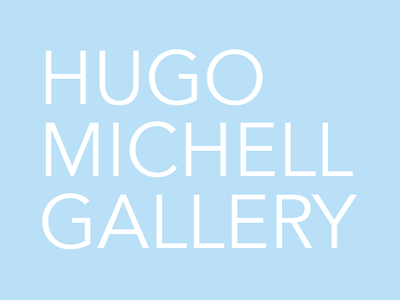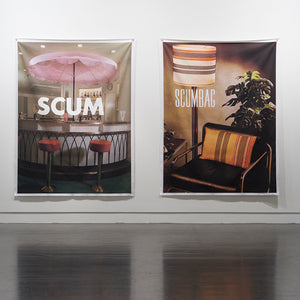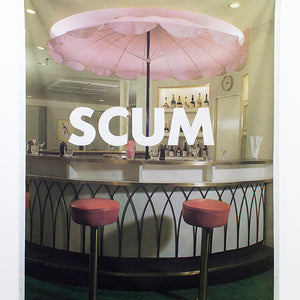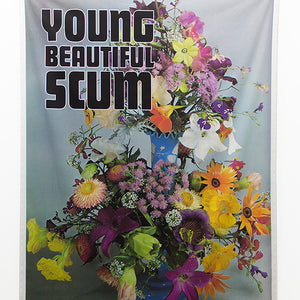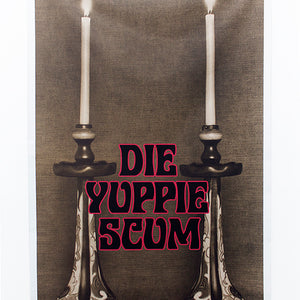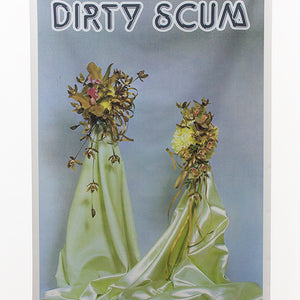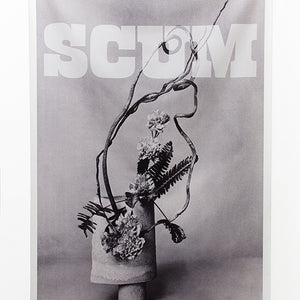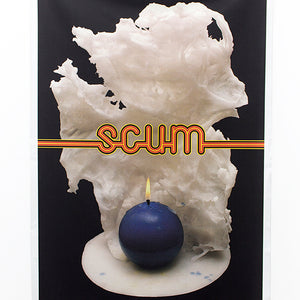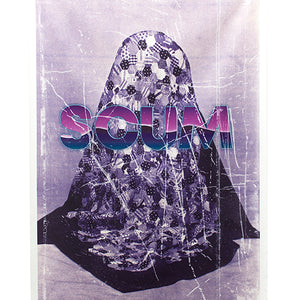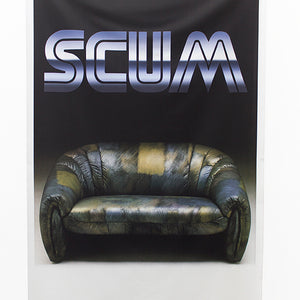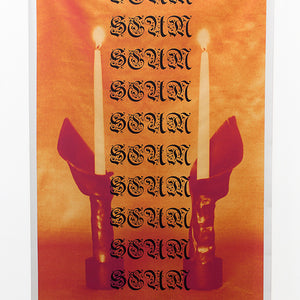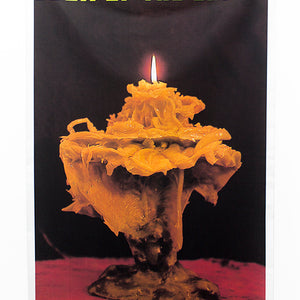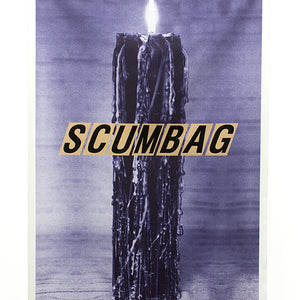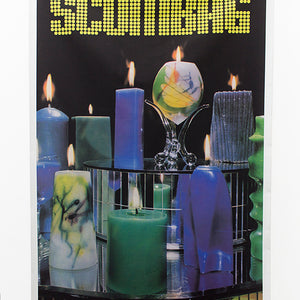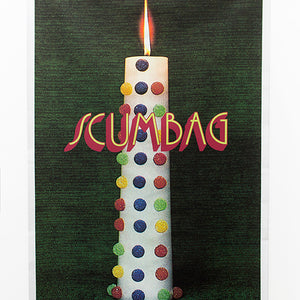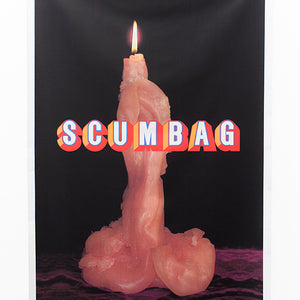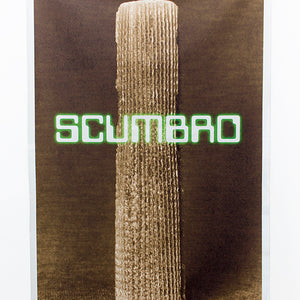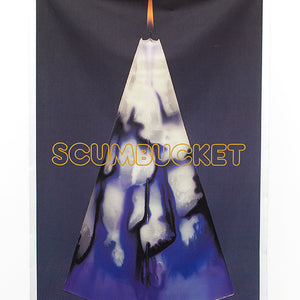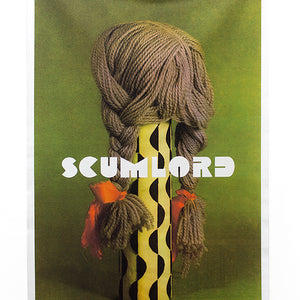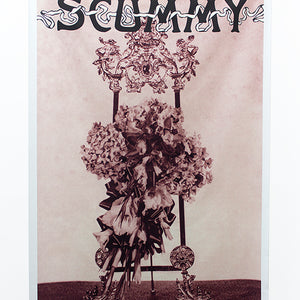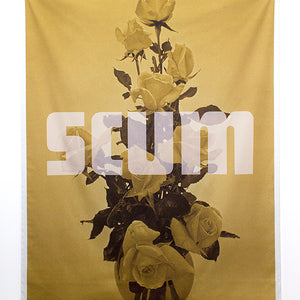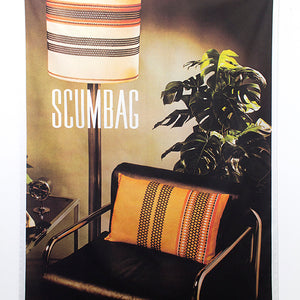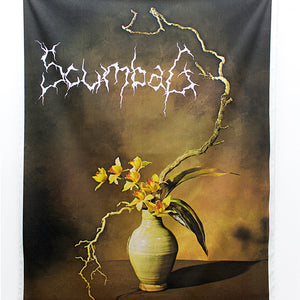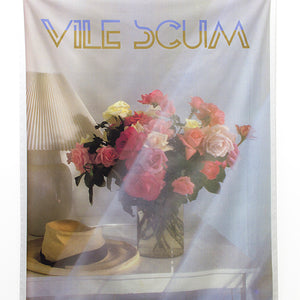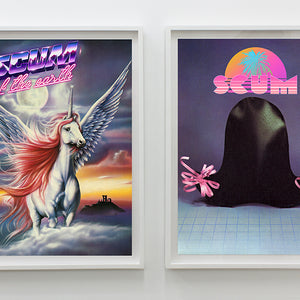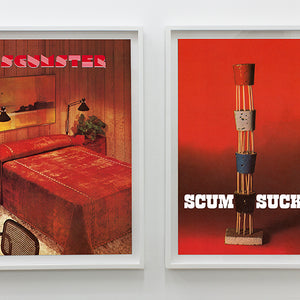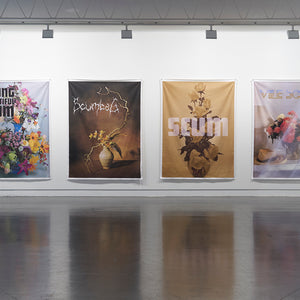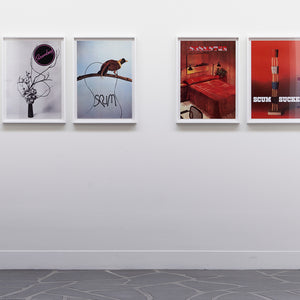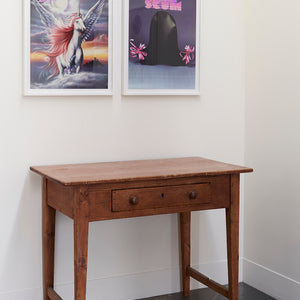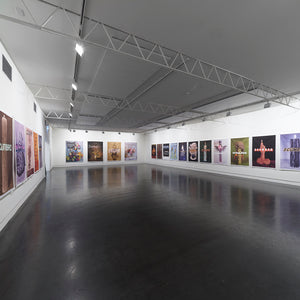TONY GARIFALAKIS SCUM SUITE
20 May to 19 June 2021
'Scum Suite' by Damiano Bertoli
As the relationship between art and design becomes increasingly complicated and the flattening of creative languages means their signposts are more difficult to identify, the proximity between their shared systems offers potential to both. The clarity of design’s communicative voice can give art a layer of authority, while design has long benefited from the assumed conceptual rigour and aesthetic flexibility of art.
Through his ongoing examination of culturally ascribed forms, Tony Garifalakis knowingly engages image and text – the twin-towers of print design methodology – to shift the semantic register of ‘common’ imagery (pop culture, music, cults, fashion, craft etc) and its components. These signs and symbols present themselves as units of meaning or complicated knots of reference, and are gradually transformed via their dispersal through the frameworks of cultural production. These signs also belong to a discourse between art and design, and they both, as language, are equally destabilised by Garifalakis’ détournement, which challenges the self-mythology so critical to these social structures and the legibility of their announcements.
In Scum Suite, Garifalakis unravels an inventory of usage, an index of extensions from the central definition of the word ‘scum’ paired with a selection of images from amateur craft magazines and interior design journals, unsettling the field of established meanings. These works lay bare the image/text device, but also allow its formula to be contaminated by an often wayward sensibility. What appears simply as dissonance, leads to a richer and entirely more complex relation between what these images represent and the influence which can be brought to bear upon our reading of them. Garifalakis methodically inflicts a program of semantic variables upon these seemingly innocent examples of craft and design through typography, which drags along with it a range of associations which have accumulated and shifted throughout the history of print culture. In contrast to the formlessness of DIY handicrafts or the austerity of Ikebana, the artist’s typographical additions offer a declarative voice, but this element further undermines any direct relationship between what is depicted and what is stated. Type is employed here not only as ‘logos’ but as style; a range of connections can be made between the text’s character and its paired image, occasionally harmonious but often disjunctive.
Despite a continued interest in subverting the languages of power, manipulation and abjection, Garifalakis’ practice, through its formal restraint and re-routing of subjectivity, can be seen as clearly inheriting the systems and structures of Post-Conceptualism, where word and image are examined as both disparities and coordinated allies, loaded with the capacity to simultaneously articulate and dissolve how we construct meaning.
